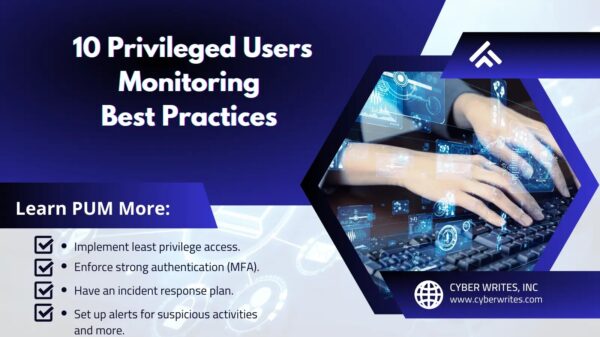Radware’s recently released “Quarterly DDoS Attack Report, which provides an overview of attack activity witnessed during the first quarter of 2021, found that while the total number of attacks held fairly steady from the previous quarter, attack volumes were up dramatically.
The full report analyzes DDoS attack activity by industries, attack vectors, DDoS attacks on applications and on-premise vs. cloud. Major findings include the following:
The first half of Q1 was characterized by large attacks on finance and a continuation of the 2020 ransom DDoS campaign. By the end of 2020, the extortionists started circling back to earlier victims who did not pay ransom in earlier attempts, reusing their attack research and increasing the pace of their campaign to benefit from the surging Bitcoin value.
To overcome the pandemic, organizations began relying on remote operations, teleworking and remote access infrastructure. As a result, DDoS actors found new opportunities and began targeting the backend of the communication infrastructure of organizations. Several global organizations had branches/remote offices targeted during this period, with actors leveraging new tactics to impact organizational productivity by targeting internet connectivity and remote access.
With limited bandwidth, attackers can achieve more impact and disrupt a branch or an organization’s operations. Attacking the public assets of organizations provides increased visibility, but typically these assets are better protected and harder to bring down. Public-facing assets remained an essential target throughout Q1 of 2021, as actors attempted to impact an organization’s reputation or to send a political message.
Attack Volume/Numbers
Compared to Q4 of 2020, the total attack volume in Q1 of 2021 increased by 31% while the total number of attacks decreased by 2%. The largest recorded attack in Q1 of 2021 was 295Gbps, up from 260Gbps in Q4 of 2020. The total volume and total packets for March of 2021 were similar to levels witnessed in November of 2020. The period between December and February was characterized by larger volumes and higher amounts of packets, caused mainly by the intensity of the attacks from the second wave of the ransom DDoS campaign.
The average attack size in Q1 of 2021 was down from over 315Mbps in December to levels just below 150Mbps. December 2020 had the lowest number of attacks over the previous six months. February and March 2021 had a great number of attacks that were smaller in volume compared to December and January. The relative number of attacks larger than 10Gbps has a similar evolution compared to the average attack size. In March 2021, one in every 1,000 attacks was greater than 10Gbps compared to three per 1,000 attacks in December of 2020.
Industries
Healthcare was dominated by biotechnology and pharmaceutical attacks in the first half of Q1 2021, while the activity moved to a smaller number of attacks targeting hospitals in the second half of the quarter. The public assets of large biotechnology organizations were the primary targets and resulted in the most significant attacks targeting the healthcare vertical for the quarter. Public-facing assets remained an important target for actors seeking to impact an organization’s reputation or send a political message.
The government sector experienced a lower number of attacks, but higher volumes in February and March 2021. This contrasts with Q4 2020, when this sector experienced high numbers of low-volume assaults. Both periods were dominated by attacks on North America-based government institutions with fewer and smaller attacks in Europe, Asia and Latin America. Attacks on finance changed from infrequent, high-volume attacks in December and January to smaller, more frequent global attacks in March, impacting more offices and branches of multinational organizations.
Healthcare attacks began to slow in March, but this industry has continued to experience regular attacks since November 2020. These attacks primarily targeted branches of international organizations. Government experienced high attack activity in October, and even larger volumes in February and March 2021.
Attack Vectors and Applications
More than 50% of the attack volume targeted HTTPS and nearly 20% targeted HTTP. DNS and NTP represented more than 10% of attack volume. NTP primarily targeted (UDP port 123 in destination) for abuse in reflection attacks; the network suffering the NTP reflection is typically collateral damage and not the intended victim. DNS had to endure the fastest packet rate from a single attack vector at 151.36Mpbs. Other noteworthy attack vectors were Chargen, RDP, SSDP, Memcached and ARMS.
UDP Fragment and UDP Floods accounted for more than 90% of the volume in Q1 of 2021.
More specific UDP amplification attack vectors such as NTP and DNS accounted for 7% of total volume while TCP out-of-state took less than 1%. DDoS attack vectors leveraging UDP or TCP are both common and effective in their own way. Because of the nature of UDP (stateless and mostly easily spoofed) and associated publicly available services, it gets leveraged in many amplification attacks. UDP is used to saturate internet links by means of volumetric attacks and by consequence the average packet size for UDP attacks is coming close to the maximum the internet allows. TCP attacks on the other hand is mostly leveraged to exhaust state on services or to send a very high rate of packets trying to overrun network equipment or shut internet connections by rate of packets and not by volume. Typically, the packet rate of TCP is higher compared to UDP but the average packet size is smaller.
In summary, it is by nature of the attack that UDP takes much more volume compared to TCP. It does not indicate that one if more preferred than the other.
UDP fragment attacks averaged at 1269 bytes per packet while TCP out-of-state averaged at 315 bytes. Many TCP attack vectors such as SYNACK, TCP Zero Seq, FIN-ACK and RST Floods average below 100 bytes per packet.
TCP attacks typically target resource exhaustion or attempt to overrun network equipment CPUs, while UDP Floods are typically leveraged for trying to saturate internet connections. The use of attack vectors is mostly based on the availability of reflectors and amplification hosts and the most popular vectors provided by booter and stresser services.
UDP is still the most leveraged protocol for DDoS attacks, which is not surprising since UDP traffic can be easily spoofed and most of the amplification attack vectors are UDP-based. IP and TCP were more prominent in Q4 of 2020, while in Q1 of 2021, 99% of the total attack volume consisted of UDP traffic.
On-Premise vs. Cloud Mitigated
More than 85% of attacks were mitigated on-premise in Q1 2021. The 15% attacks mitigated in the cloud represent over 92% of the total volume and almost 84% of the packets.
As expected, on-premise devices will divert to the cloud when attack volumes are close to the saturation level of the internet connection. In hybrid deployments, the cloud will handle the volumetric attacks while on-premise will typically handle low-and-slow and low-volume DoS attacks, as well as anomalies and intrusions.
In conclusion, on-premise detection and mitigation will fail to prevent 15% of the attacks. If latency introduced by cloud protection is important, 85% of the attacks can be mitigated by on-premise equipment. Intrusions made up 73% of all malicious events with the majority mitigated on-premise. The cloud scrubbing centers are responsible for mitigating 94% of DoS events.
Attacks Initiated During Business Hours
In October 2020, government was the most attacked vertical, but starting in November, healthcare dominated the number of attacks until finance superseded healthcare in March 2021. The attacks on healthcare were smaller in size and the median attack size ranged from a couple of Mbps up to 3Gbps. The temporal distribution of attacks on several healthcare organizations has a distinctive pattern with the highest concentration of attacks from Monday to Friday and a significantly lower concentration on Saturdays and Sundays. Only a few attacks were recorded during the holidays, compared to the period before and after.
Several organizations in healthcare, finance and retail demonstrated similar temporal distributions and had consistently higher concentrations of attacks during weekdays across Q4 2020 and Q1 2021. The number of attacks initiated at night is lower than the number of attacks undertaken during office hours and is consistent across time zones.
Conclusion
The first quarter of 2021 was characterized by the continuation of the 2020 ransom DDoS campaign, with high-volumetric attacks targeting the finance sector. Biotechnology and pharmaceutical continued to experience attacks, however the threat landscape shifted from fewer, high-volumetric attacks to minor attacks characterized by lower volumes. Overall, the number of attacks held steady (down 2% from Q4 of 2020), but attack volumes increased by 31%. In fact, the occurrence of major attacks of 10Gbps or more tripled in Q1 2021 versus December 2020, with the largest attack 295Gbps.










































